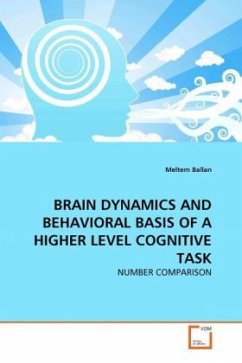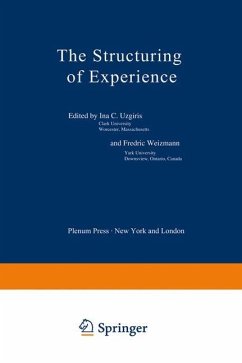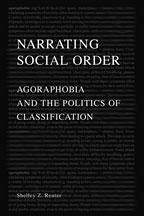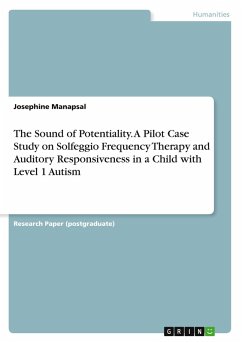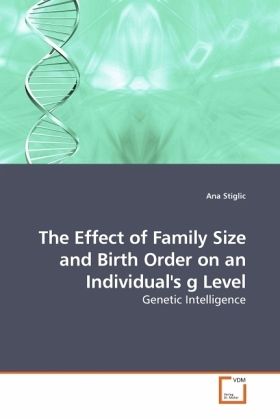
The Effect of Family Size and Birth Order on an Individual's g Level
Genetic Intelligence
Versandkostenfrei!
Versandfertig in 6-10 Tagen
32,99 €
inkl. MwSt.

PAYBACK Punkte
16 °P sammeln!
This study investigated whether the environment created by being born in a specific birth order and/or family size affects individuals genetic intelligence, or g. Based on the phenomenon of rising IQ scores between generations, the fact that IQ and g are correlated and that nearly all between-family variables have been shown not to produce the rising effect, it was hypothesized that there could be a significant difference in g scores of siblings of the same family and those of different sized families born in the same position. Birth order and family size could be argued to encompass most with...
This study investigated whether the environment created by being born in a specific birth order and/or family size affects individuals genetic intelligence, or g. Based on the phenomenon of rising IQ scores between generations, the fact that IQ and g are correlated and that nearly all between-family variables have been shown not to produce the rising effect, it was hypothesized that there could be a significant difference in g scores of siblings of the same family and those of different sized families born in the same position. Birth order and family size could be argued to encompass most within-family factors that result in influencing the family environment and its influence on each child within it. Each child is part of the same within-family environment, but each child s experience is different, accounting for the non-shared environmental effects. The Confluence and Resource Dilution Models were discussed as explanations of what happens to g levels. Siblings scores were compared for birth-order effects and the scores of children from the various sized families were compared for family size effects





